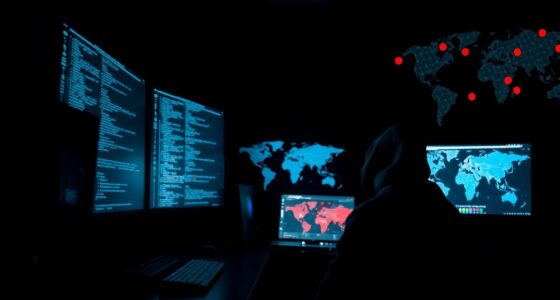
As Denmark raises its cyber threat level for the telecommunications sector from medium to high, you should be aware that state-sponsored espionage attempts are on the rise. This shift signals heightened risks not just for Denmark but for telecom providers across Europe and globally. Major actors behind these cyber operations include China, Russia, and Iran, all of whom have advanced technical capabilities and a vested interest in accessing sensitive telecommunications infrastructure.
China, in particular, is notorious for its cyber espionage efforts through groups like Salt Typhoon. These groups actively target telecom providers worldwide, exploiting vulnerabilities in network devices to gain unauthorized access. They often use stolen credentials and sophisticated techniques like GRE tunnels to exfiltrate data without detection. By doing so, they aim to acquire knowledge and technology that can bolster their own capabilities. If you’re in the telecommunications sector, you need to be particularly vigilant about these threats.
China’s cyber espionage, led by groups like Salt Typhoon, targets telecoms worldwide, exploiting vulnerabilities to enhance their capabilities.
Russia also plays a significant role in this landscape, employing hybrid warfare tactics that blend cyber espionage with physical sabotage. Their ability to execute destructive attacks is assessed as medium but carries substantial risks. Recent assessments suggest that Russian hackers may have prepositioned malware within Danish systems, ready to disrupt services when geopolitical tensions escalate. You should be aware of how these motivations—often rooted in political conflicts like the situation in Ukraine—can impact your organization’s security.
Iran’s cyber activities shouldn’t be overlooked, either. Iranian hackers are adept at exploiting vulnerabilities within telecom networks for communication interception and data manipulation. They seem particularly focused on high-value targets, using their capabilities to conduct extensive surveillance and espionage. This broad spectrum of adversarial activities highlights the complex landscape you face as a telecommunications provider.
With the growing reliance on critical technologies like 5G, the stakes are even higher. Foreign equipment, especially from companies like Huawei, raises alarms about potential backdoors that could facilitate espionage. Furthermore, the rise in cyberattacks on critical industries like telecommunications underscores the urgency of addressing these threats.
As you navigate these challenges, it’s essential to regularly update your security measures and ensure that your infrastructure is resilient against these advanced threats. In this rapidly evolving environment, staying informed and proactive is crucial to safeguarding not just your networks, but also the sensitive data of your customers.









